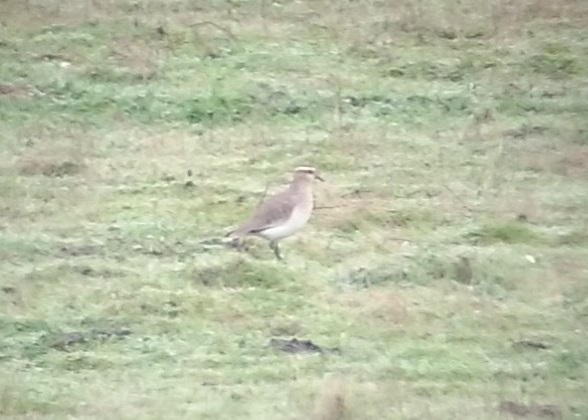A visitor in the mist
 |
| Sociable Lapwing (Marc Gálvez) |
I had been earlier on the plains just west of Trujillo. In contrast to the anticyclonic weather of most of winter so far, the prevailing low dense, pigeon-grey canvas of cloud deprived me of the sense of space in this most open of landscapes. Instead of a defined horizon and distant sierras, my sense of distance was now defined by hundreds of metres rather than tens of kilometres, with field and sky converging in washed tones of greys gradating to silven pasture green, droplets of water dangling from stems of grass. Glistening across the sward as highlights were sodden webs of the caterpillar colonies of Ocnogyna beatica (the Winter Webworm). But I cherished the elemental sensation of the wind and mist on my face, subject to the same environment as that of the Retinta cattle, stoically grazing in front of me. The Lapwings stood widely dispersed in the same field, almost monotone black-and white in this dull, leadened light. They pursued the plover-pacing hunt for prey, six or seven strides before abruptly stopping, pausing and then taking another push forward, or more often at a small deviation, leading to a zigzagged foraging pattern across the short turf. Occasionally the slightly wavered almost anguished cry of one of the plovers scratched across the nearly silent landscape. It was as if the very blanket of cloud had muffled sound. A party of Black-bellied Sandgrouse, 25-strong, shuffled halfway up a gentle slope, their dove-like heads in motion as they fed.
My lure took my gaze away from these birds, and there it was. Like its cousins, caught in the quick-paced rhapsody, with its black legs almost like clockwork levers, taking the bird forward, pausing and then onward again. But unlike the Lapwings, the smooth light brown-grey upperparts made for a perfect match with the tone of the day. Indeed it would have been hard to pick-up at all in this mist-veiled light had it not been for the dramatic white supercilium, trimmed above and below by a dark fringe. It had been many years since I had seen a Sociable Lapwing, and upon hearing of the luck that Gav Thomas, a visiting birder, had had in finding this bird, on one of my regular beats no less, it took no persuasion in getting me out to celebrate this discovery. I stood in the modicum of shelter offered by a wispy Retama, to shield my telescope from the wind and now steady light rain. Thus I stood and watched this rare vagrant until I was satisfactorily satiated. I gave it my time in reverencial respect, deliciously savoring the occasion. As I watched my mind imagined the steppes of Kazakhstan, where most Sociable Lapwings nest, from where somehow this individual veered off its programmed migration route, joined up with Lapwings heading west into Spain and arrived on the open pastures just twenty minutes from home, instead of the grasslands of southern Sudan. This is one of the world's rarest waders, critically endangerd having suffered a catastrophic decline over recent decades, although the finding of a large flock of over three thousand birds at a stopover site in Turkey a few years ago has a cast a degree of optimism that the population may be a somewhat larger than feared. I wondered how long this symbol of the Central Asian steppes would stay here on the man-made steppic landscape of Extremadura, and hoped that when it finally departs, guided by its genes and its common (Northern) Lapwing neighbours it will safely get back home.
I thank my friend Marc Gálvez for the photograph of this Sociable Lapwing at the top of the post.



Comments